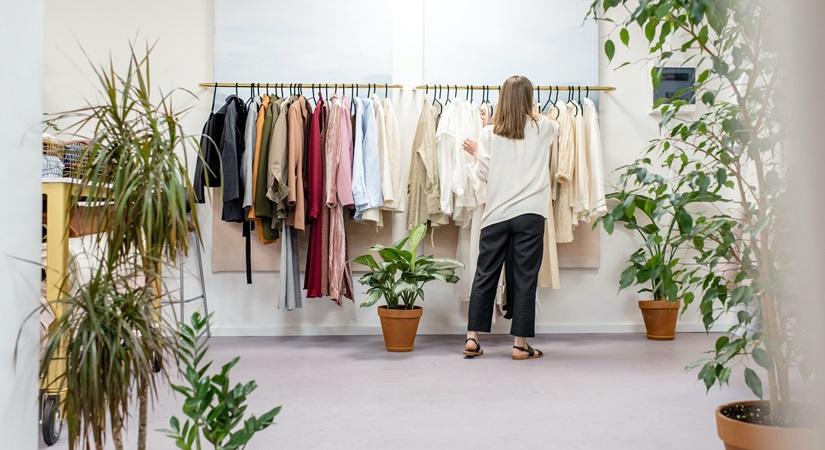Cover Story
Build a capsule wardrobe and reduce fast fashion consumption

A closet with fewer, more versatile, and longer-lasting garments can be money-saving and sustainable
By N. Lothungbeni Humtsoe
July 14, 2023 (IANSlife) Sustainable fashion choices are witnessing an increase in preference. This includes the much-respected capsule wardrobe. Be it Marie Kondo's wardrobe-focused tidying technique or Matilda Kahl's choice to wear one outfit to work for three years, the trend of dressing up consciously and having a capsule wardrobe is gaining traction. Before we get into how to build a capsule wardrobe, let’s know what it entails.
A capsule wardrobe is an edit of clothing that has a long shelf life, is thoughtfully curated, and is interchangeable to make multiple outfits! A capsule wardrobe, in essence, helps you in creating an array of looks with a selected number of pieces.
The term capsule wardrobe was coined in the 1970s by Susie Faux, the owner of a London boutique called Wardrobe. Faux believed that a capsule wardrobe comprises a few essential pieces. These can be supplemented with seasonal additions.
Capsule wardrobes in this day and age are having a revival, largely due to an increase in public awareness. The consumer today is much more aware of the harmful effects of fast fashion on our planet and all living species.
A key tip to build a capsule wardrobe and reduce fast fashion consumption, Surabhi Chopra, founder of Surabhi Chopra Label says, "Clothes are often our armor that we do every day, or they are a means to celebrate festivities. The thought of having fewer pieces in your wardrobe can often be overwhelming. Therefore, start with an analysis of your lifestyle. To create a capsule wardrobe, you need to know what your personal style is and what pieces will be most useful for the kind of lifestyle you lead. Try asking yourselves questions like, 'Do I need work-specific clothes? Do I need more travel clothes? Do I need more formal wear?' Consider all your needs so that you are better able to stick to the capsule wardrobe without any impulse purchases."
"The second step is to declutter your wardrobe. Most of us have a habit of hoarding clothes. Therefore, take out everything you have in your closet and analyse every piece in accordance with your style and lifestyle. Remove the pieces that you haven’t worn for a long time or the ones that don’t suit you or aren’t your size. Donate, sell, or recycle these items. Then sort the rest into categories like bottoms, denim, tees, blouses, etc."
"The final step is to curate timeless pieces that are interchangeable. Have 25–30 items for every season. The basis of a functional capsule wardrobe is versatility. It includes interchangeable garments that can create multiple looks for our everyday lives. Once you have sorted your pieces and feel that some basics are missing, invest in those items. Ensure that what you do is sustainable and long-lasting. Have basic tops, versatile jackets, etc. Neutral colours can be a great bet, as they are great for creating cohesive looks for any season and occasion," adds Surabhi.
While building a capsule wardrobe, it is imperative to have quality pieces that are both fictional and versatile. Do not invest in pieces that will lose their charm after a few wears. The only way to combat fast fashion is to invest in clothing that is useful, practical and suits your lifestyle. A versatile piece of clothing can easily pair with other pieces, be styled in different ways, and be worn in different contexts. Think about the item’s weight, fabric quality, silhouette length, and, most importantly, how easy it is to maintain and wash. For an occasional treat, if you feel that for a particular occasion, you cannot use any of the garments in your capsule wardrobe, then renting something boring can be a great idea!
Although remember that a capsule wardrobe should be built slowly over time. Fast fashion fuels impulse purchases and rapid discards with its low prices and changing trends. This waste finds its way to landfills, where it results in low wages for the workforce and a heavy toll on the environment due to unethical and unsustainable manufacturing practices. It is estimated that the garment industry contributes to almost 10% of the world's greenhouse gas emissions.
Therefore, purchasing clothes just for the sake of trends or impulse comes at a price for the environment.
(This article is website exclusive and cannot be reproduced without the permission of IANSlife)
N. Lothungbeni Humtsoe can be contacted at lothungbeni.h@ians.in


